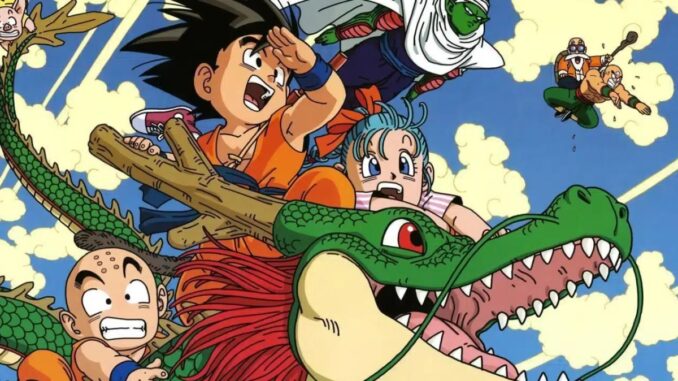
By Ezae Darby
Over the past 40 years, fans everywhere have had the amazing opportunity to experience the world of “Dragon Ball,” which was first created by renowned artist and character designer Akira Toriyama. The franchise follows the main protagonist, Goku, in all of his adventures which span from Dragon Ball, the original show, all the way to “Dragon Ball Z” and “Dragon Ball Super,” in which he continues his journey. The worldwide impact of Dragon Ball and the work of Akira Toriyama has undoubtedly had a huge impact on people and cultures everywhere, and will continue to for generations after.
This past weekend, fans in America got the special opportunity to watch the English premiere of the newest addition to the series, “Dragon Ball Daima.” This show serves as the last project that creator Akita Toriyama worked on before his death in March of this year.
Dragon Ball Daima continues the adventures of Goku, who is mysteriously shrunk into a child along with his friends. They all decide to venture to the demon realm to uncover this mystery and explore the unknown. This is the fourth installation in the series which comes right after Dragon Ball Super. The show takes inspiration from some elements of “Dragon Ball GT,” a standalone installation within the series.
The Dragon Ball franchise has had a large impact on anime culture worldwide. This is most evident in the action sequences that we see in modern-day anime, and some of the most popular anime shows to date. When it was first released, Dragon Ball elevated the standard of what action sequences looked like in anime. From the fight choreography to the intensive and immersive displays of martial arts, Toriyama’s creativity set the bar higher for what exciting action sequences should look like in anime shows.
Some of the most popular shows have credited the series as an inspiration. In the show “Naruto,” the idea of having both an adventure theme and tournament arc within the story was directly influenced by the many tournament arcs that have taken place throughout the Dragon Ball series.
The main character also possesses a color scheme that is taken directly from that of Goku when he transforms into his “Super Saiyan” form in the series, and one of their signature moves is most clearly derived from Goku’s most notable attack in Dragon Ball, the “Kamehameha.”
On the matter of pop culture, the influence of Dragon Ball has been massive within the comic book complex. In Marvel Comics, two notable characters of the series make cameos in the series, such as “Fantastic Four Heroes Return,” “X-Men,” and “No More Humans.” Taking inspiration from the show’s artistry, DC Comics has taken direction from Dragon Ball.
Outside of the world of fiction, Dragon Ball has had a huge influence on pop culture in America. The anime has been referenced in numerous popular shows such as “Teen Titans Go,” “Codename: Kids Next Door,” and “The Fairy Godparents.” The show’s influence even reaches rap music, which can be seen in the sonic works and lyricism of Big Sean, Chance the Rapper, Childish Gambino, Thundercat, Frank Ocean, and Soulja Boy.
Dragon Ball has also been featured throughout several different parades. A float of Goku originally made its debut in the annual Macy’s Thanksgiving Day Parade in 2018 to celebrate the release of one of the franchise’s newest projects at the time, “Dragon Ball Super: Broly.” This float made history as it was the first-ever anime character to appear in the parade.
It continued to make an appearance for five years, and it has been recently revealed that a new design of the Goku float will be revealed at the upcoming Macy’s Thanksgiving Day Parade for 2024. This not only celebrates the upcoming Dragon Ball theme park in Saudi Arabia, but it also commemorates the 40th anniversary of the franchise and stands as a tribute to Akira Toriyama.
Fans of Dragon Ball Daima hope it will bring in a whole new wave of supporters that continue to build upon the ideas and stories that Toriyama has gifted us with. Hopefully, the new show will embody the same spirit that inspired a generation of artists, fans, and writers everywhere.
